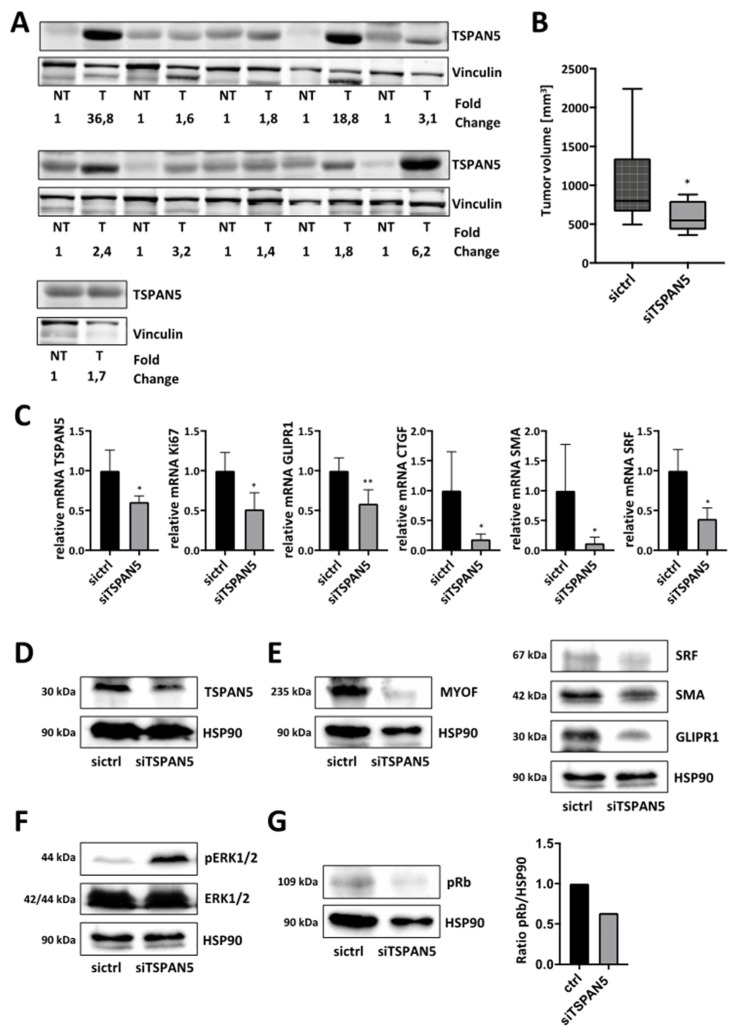Figure 7.
Anti-tumor effects of TSPAN5 depletion in xenografts. (A) Tissue samples of HCC patients were immunoblotted with anti-TSPAN5 antibodies and anti-vinculin antibody as a loading control. Relative fold changes of TSPAN5 protein expression (normalized to vinculin) between each pair of corresponding non-tumorous (set to 1) and tumorous tissue are indicated. (B) HuH7 HCC-xenograft-bearing mice were randomized and treated on day two, four, six and eight by systemic injection with polymeric nanoscale complexes containing TSPAN5 siRNA (siTSPAN5) or ctrl siRNA (sictrl). Tumor growth was measured manually. Means of tumor sizes are shown for the control and treated groups after day nine of treatment start. Data are presented as means ± SD (n = 6 mice per group); *, p < 0.05. (C) TSPAN5 knockdown efficiency, Ki67 mRNA expression and MRTF target gene expression of GLIPR1, CTGF, SMA and SRF in HCC xenografts after treatment with PEI/TSPAN5 siRNA (siTSPAN5) vs. PEI/control siRNA (sictrl), determined by qRT-PCR using the respective primers and 18S rRNA as an endogenous housekeeping gene for normalization. All data are means ± SD (n = 5); *, p < 0.05 and **, p < 0.01. (D–G) Lysates of HCC xenografts treated as above were immunoblotted with anti-TSPAN5 (D), anti-MYOF, anti-SRF, anti-GLIPR1 (E), anti-ERKpT202/pY204 and anti-ERK (F), anti-pRb (G) and anti-HSP90 antibodies. The whole Wester Blots are available at Figure S17.

